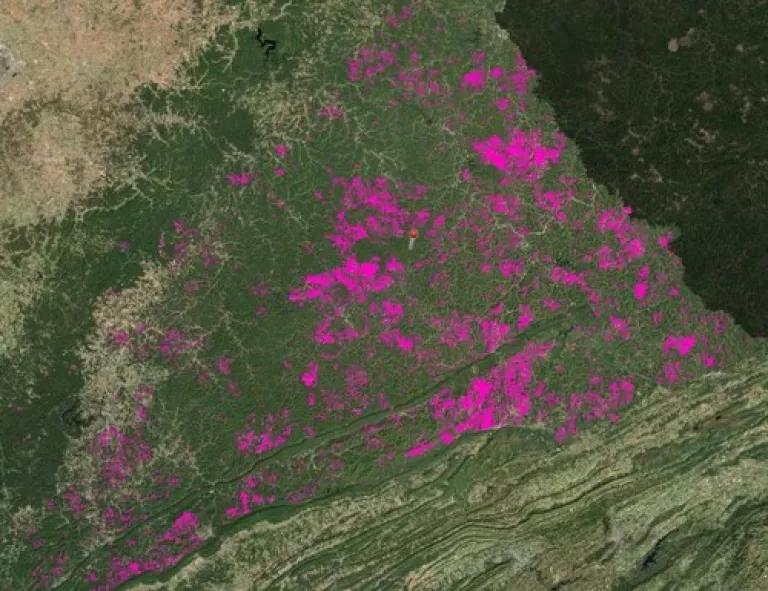
Mountaintop removal is a coal extraction procedure that involves stripping soils, blasting mountains and filling valleys and streams with mining debris. Before any of that happens, the trees on top of the mountains are clear cut.
Appalachia is blessed with the most biologically diverse temperate deciduous forests in the world. Home to some of the most diverse wildlife habitats on the continent, these forests are being destroyed at an alarming rate. As cited in NRDC's issue paper Appalachian Heartbreak:
- At current rates of deforestation from mountaintop removal, the total forest loss by 2012 would be 1,408,372 acres (or 2,200 square miles), according to EPA.
- The loss of forest cover this size means the loss of 3.14 million tons of carbon dioxide sequestration annually.
- Forests not completely destroyed by mountaintop removal become fragmented, converting ecologically diverse interior forest to edge forest at a rate of up to five times greater than regular forest loss.
As the forests are converted from interior to edge, they lose much of their ecological function supporting the floral and faunal diversity of Appalachia. Among the wildlife at risk from the fragmentation and loss of Appalachia’s mature forests are millions of migratory songbirds, like the Cerulean Warbler.
Cerulean Warbler is America's fastest declining migratory songbird. (Photo by: Barth Schorre)
Using maps produced by Appalachian Voices and hosted on SeeSouthernForests.org, it is now possible to get a sense of the scale of Appalachia's forest loss from mountaintop removal. With the click of a mouse users can now see the significant impact this extreme strip mining practice has had on the natural landscape.

Image from SeeSouthernForests.org showing forest loss (in pink) due to mountaintop removal in Eastern Kentucky. View map here (Select “Show Additional Map Data”)




